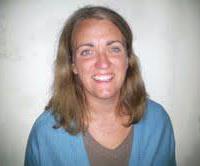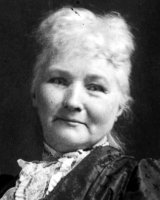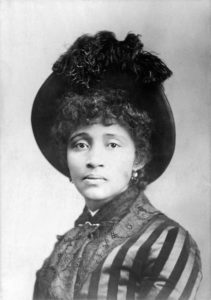By Stephanie Fortado

Dr. Stephanie Seawell Fortado is a Lecturer at the University of Illinois Labor Education Program, providing workshops and extension programming for unions and the general public on the Champaign-Urbana campus and throughout Illinois. Before joining the University, Stephanie served as the Executive Director of the Illinois Labor History Society (ILHS), the oldest state-wide labor history not-for-profit in the United States. She is currently a board member for ILHS. She completed her PhD at the University of Illinois, where she studied African American working class and social movement history. Stephanie is currently working on her first book, with the working title Race, Recreation and Rebellion, which looks at struggles over public space during the Civil Rights Movement in Cleveland, Ohio. She is a past President, Treasurer, Bargaining Team and Strike Committee member of the Graduate Employees Organization 6300, of the Illinois Federation of Teachers, and former delegate to the Champaign County Labor Council. She is currently a steward and organizing chair of the newly formed Non-Tenure Faculty Coalition, IFT Local 6546.
We are living in the midst of a rising wave of protest politics. From Black Lives Matter and the Women’s Marches to protests for immigrant’s rights, environmental justice, gun control and fair working conditions, people are taking to the streets.
It seems that with every protest, there quickly comes the chorus of nay-sayers, the “not now” crowd that rises up to warn that such action for social justice is not only untimely, but possibly even dangerous.
Calling protestors “dangerous” is nothing new. Consider the histories of two of the leading figures of the US labor movement, Mary Harris “Mother” Jones and Lucy Gonzales Parsons. Both women were declared dangerous in their day.

Mother Jones
The lives of these two women share some striking similarities. Mary Harris Jones was born in Cork, Ireland in 1837. Her family came to Canada and the United States when famine swept their homeland. She moved to Memphis, where she found work as a dressmaker. She married a union man and iron molder, George Jones. The Jones family fell on hard times when, after the Civil War, an economic downturn caused rampant layoffs among workers in the city. Then, in 1867, yellow fever ravaged poor and working class sections of Memphis and claimed the lives of George and all four of their children. In the wake of this unfathomable personal tragedy, Jones came to Chicago, where she opened a dressmaking business with a partner.
Her work gave Jones a window into the great disparity between the poor and wealthy Chicagoans. In her autobiography, she wrote, “We worked for the aristocrats of Chicago, and I had ample opportunity to observe the luxury and extravagance of their lives. Often while sewing for the lords and barons who lived in magnificent houses on the Lake Shore Drive, I would look out of the plate glass windows and see the poor, shivering wretches, jobless and hungry, walking along the frozen lake front … My employers seemed neither to notice or care.”
But Jones noticed and cared. And a few short years later, when tragedy struck again and she lost everything in the Great Chicago Fire, she turned to the growing movement of working people building in Chicago. As her involvement and stature in the labor movement grew, she took on the mantle of “Mother” Jones. She spent the rest of her life crisscrossing the nation, fighting for the rights of miners, child laborers and other working people until her death in 1930.
In 1902, Mother Jones was arrested for her work organizing mine workers in West Virginia. At her trial, the West Virginia District Attorney argued, “There sits the most dangerous woman in America. She comes into a state where peace and prosperity reign, crooks her finger [and] 20,000 contented men lay down their tools and walk out.” Of course, peace and prosperity did not reign in West Virginia coal country and the miners were far from contented. But the reputation of Mother Jones as the “most dangerous woman in America” stuck.

Lucy Parsons
Lucy Parsons was another woman who worked in Chicago as a dressmaker, meaning she too saw first-hand the great gulf between the haves and the have nots in that city. Parsons was born into slavery in Texas. An African American, Native American, Mexican American woman, she fell in love with a white man, Albert Parsons. He too was a union man, a member of the typographical union. Lucy and Albert moved to Chicago to flee the persecution faced by an interracial couple in the postbellum South and in search of new opportunities. There they became involved in the labor movement, and Albert served as the editor of the newspaper The Alarm, one of the leading newspapers for working people in the city. Lucy was a regular contributor to the paper. On May 1, 1886, Lucy and Albert were at the head of a march of workers down Michigan Avenue, part of a national day of action for the eight-hour work day that saw more than a quarter-million workers take to the streets across the country. Three days later, when a bomb went off at a worker’s rally at Chicago’s Haymarket Square and several policemen were killed, Albert was one of eight men who were blamed. He was executed by hanging despite the lack of any evidence tying him to the bomb. After her beloved Albert’s death, Lucy continued to stand up for the rights of working people until she died in 1942. Because of her radical organizing and writing, Parsons came to be known by the Chicago police as “more dangerous than a thousand rioters.”
Both Mary and Lucy experienced a depth of hardship and personal tragedy in their lives, including famine, disease, slavery, fire and the death of those they loved most dearly. These fires of tragedy forged in these two woman a steel of determination and a sharpness of will to confront those who would prop up inequality and injustice. In other words, it made them dangerous.
Mother Jones and Lucy Parsons exemplified the profound importance of unwaveringly speaking out against injustice. Mother Jones travelled tirelessly to support workers, and wherever she went, she spoke her mind. In one speech she declared, “I asked a man in prison once how he happened to be there and he said he had stolen a pair of shoes. I told him if he had stolen a railroad he would be a United States Senator.” Another time she explained, “There is something wrong in our social make-up, when we make criminals out of the youths, put them in jail, hire wardens and guards and pay them to take care of them and tax the people. Your whole system, my friends, is wrong.” Mother Jones named injustice where she saw it, and there is power in such naming.
So did Lucy Parsons. She once said, “Passivity while slavery is stealing over us is a crime.” She was not speaking abstractly. Lucy Parsons had experienced the brutality of slavery first-hand. It is a word she chose to use often in her speeches and writings about the exploitation of working people, and especially the exploitation of women. She was issuing a warning that passivity can allow exploitation to grow. She was exhorting us to action.
Both Mother Jones and Lucy Parsons were considered dangerous because they were willing to transgress what were considered the acceptable lines of behavior for women of their day. Every time Lucy Parsons gave a speech on a street corner, every time Mother Jones visited a mining camp, these were dangerous acts. And because of these acts these women endured prison more than once. They knew the potential consequences of their actions, and yet they acted anyway.
If we want to be dangerous like Mother Jones and Lucy Parsons, we must get out of our comfort zones and show up where the most vulnerable are fighting for their rights. And right now we could use more dangerous people.
This article is adapted from an address given at the annual Mother Jones Dinner in Springfield, Illinois on October 14, 2017.
